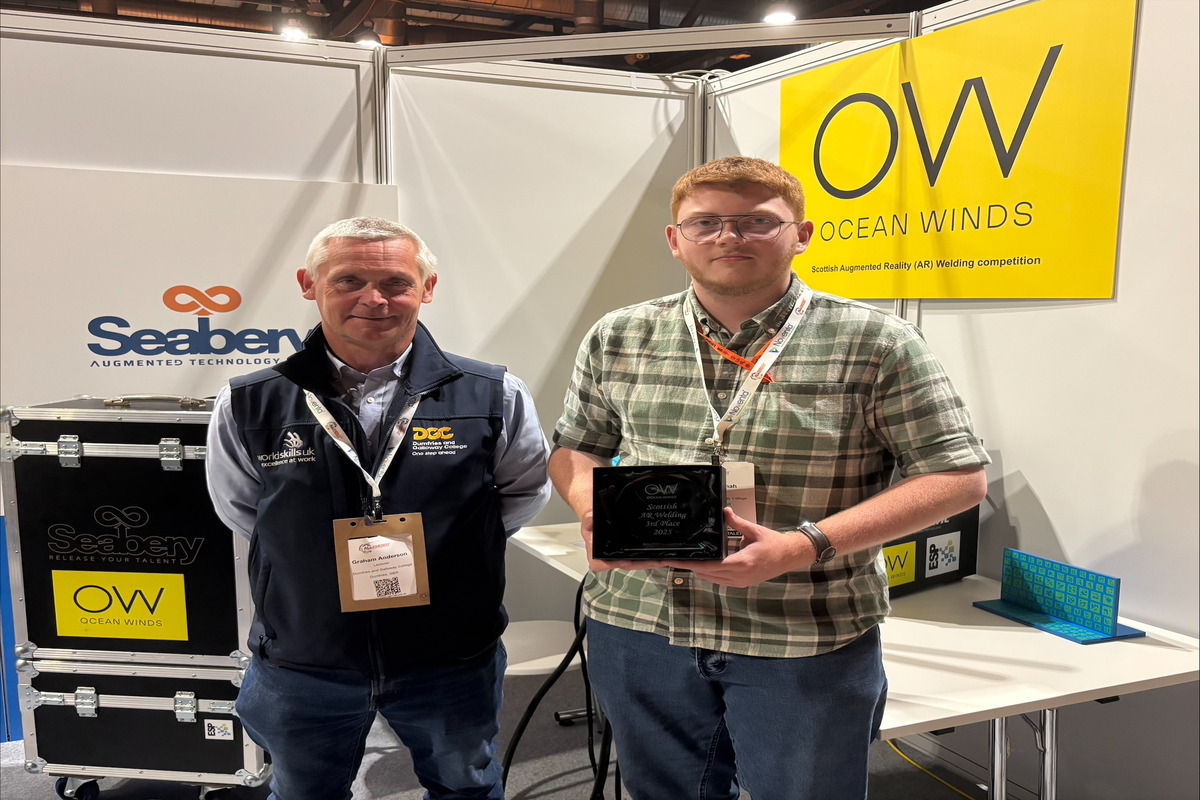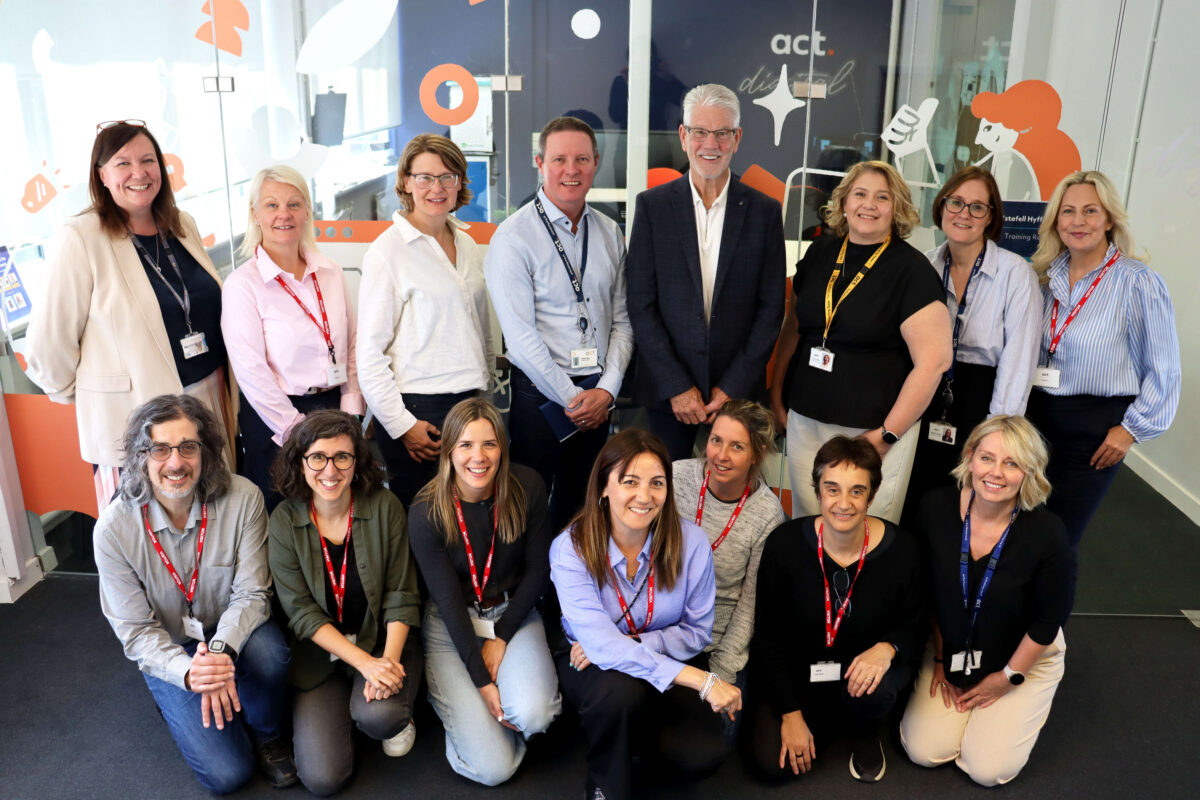Interior systems installer

Reference Number: ST0388
Details of standard
Occupation summary
This occupation is found in the Construction and Built Environment industry including new-build, renovation and refurbishment. It is a specialist contracting occupation largely involved in the construction of partitions, walls and ceilings. The Interior Systems sector alone has over 35,000 operatives working on extremely diverse projects in hotels, schools, airports, football stadiums, hospitals, shopping centres. However other projects may mean working on security controlled installations such as Military Bases which may never be seen or used by the public. Interior Systems operatives have also played a major part in the construction on iconic structures which are known throughout the world and include Canary Wharf, the Olympic Stadium, Battersea Power Station and the Shard.
This is a fast growing sector with many opportunities for career progression into site supervision and management position which can lead to running their own businesses.
The broad purpose of the occupation is to install, repair and maintain various elements of the internal structure of a building to a high standard. (e.g. ceilings above and walls around the structure.)
In their daily work, an employee in this occupation interacts with other colleagues, other trades, site supervisor, site manager, end users, main contractors and suppliers. Environments could range from internal and external construction sites to occupied buildings eg large commercial properties or residential tower blocks with apartments and specialist buildings such as car showrooms. The work would usually be during normal weekday hours but unsocial hours may also be necessary. The work will be physically active, including lifting and fixing systems into place. Work could be at height from a platform or mobile scaffold and operatives will need to follow strict safe working practices at all times in whichever occupational area they choose. They will report to a supervisor or site manager and be capable of managing their own time, quality and resources to meet deadlines and specifications.
This is a core and options standard with two pathway routes with – :
- Drylining – methods to install different drylining systems that form the walls and rooms within a building, often used to hide wires and pipes whilst improving acoustics and create space for insulation.
- Ceiling and Partitions.- incorporates different ceiling and partition systems within a building. Used to provide different types of working environments, taking account of lighting and other fixtures.
Core occupation duties
Duty |
Criteria for measuring performance |
KSBs |
|
Duty 1 Interpret drawings to ensure work is completed to specification |
Work is delivered in line with specification |
K1, K2, K3, K4, K5, K6, K7, K8, K9 S1 B1, B2, B3, B4, B5, B6 |
|
Duty 2 Keep work area clean and tidy |
Clean and tidy workspace is evidenced and planned in as standard |
K1, K2, K3, K4, K5, K6, K7, K8, K9, K10 S1,S2, S3, S4, S5, S6, S7, S8, S9, S10, S11 B1, B2, B5 |
|
Duty 3 Measure and mark out interior systems projects in accordance with industry standards |
Delivered in line with customer and company expectations on time, accurately and with efficient product utilisation in line with industry standards. |
K1, K2, K3, K4, K5, K6, K7, K8, K9, K10 S9, S10, S11, S12, S13, S14, S15, S16 B1, B2, B3, B4, B5, B6 |
|
Duty 4 Install metal furring ceilings and bulkheads in accordance with specification & manufactures instructions |
Demonstrate capability within accuracy and in a timely manner |
K1, K2, K3, K4, K5, K6, K7, K8, K9, K10, K11 S1,S2, S3, S4, S5, S6, S7, S8 B1, B2, B3, B4, B5, B6 |
|
Duty 5 Install plasterboard partitions in accordance with specification & manufactures instructions |
Demonstrate capability within accuracy and in a timely manner |
K1, K2, K3, K4, K5, K6, K7, K8, K9, K10, K11, K12 S1,S2, S3, S4, S5, S6, S7, S8, S9, S10, S11, S12, S13, S14, S15, S16 B1, B2, B3, B4, B5, B6 |
|
Duty 6 Complete quality assurance checks in accordance with specification to enable handover in line with site procedures |
Deliver in line with customer and site specifications |
K1, K2, K3, K4, K5, K6, K7, K8, K9, K10 S1,S2, S3, S4, S5, S6, S7, S8, S9, S10, S11, S12, S13, S14, S15, S16 B1, B2, B3, B4, B5, B6 |
Option duties
Duty |
Criteria for measuring performance |
KSBs |
|
Option duty 1: Install and repair metal stud partitions according to/in accordance with design details, specification, manufactures recommendations and best practice guidelines
|
Evidence the ability to install accurately in line with specifications, manufacturers requirements and FIS best practice guides |
K1, K2, K3, K4, K5, K6, K7, K8, K9 S1,S2, S3, S4, S5, S6, S7, S8, S9 B1, B2, B3, B4, B5, B6
|
|
Option duty 2: Install and repair Framed wall linings Eg metal dryliner channels, metal wall furrings, timber battens
|
In line with specifications with a focus on speed, accuracy and productivity |
K1, K2, K3, K4, K5, K6, K7, K8, K9 S1,S2, S3, S4, S5, S6, S7, S8, S9 B1, B2, B3, B4, B5, B6
|
|
Option duty 3: Install plywood pattresses according to specification & manufactures instructions
|
In line with specifications with a focus on speed, accuracy and productivity |
K1, K2, K3, K4, K5, K6, K7, K8, K9 S1, S2, S5, S7, S8, S9 B1, B2, B3, B4, B5, B6 |
|
Option duty 4: Form framed and frameless beam and column in accordance with specification & manufactures instructions.
|
In line with specifications with a focus on speed, accuracy and productivity |
K1, K2, K3, K4, K5, K6, K7, K8, K9 S1, S2, S3, S5, S6, S7, S8 B1, B2, B3, B4, B5, B6 |
|
Option duty 5: Form builders works holes and openings for windows and doors
|
In line with specifications with a focus on speed, accuracy and productivity |
K1, K2, K3, K4, K5, K6, K7, K8, K9 S1,S2, S3, S4, S5, S6, S7, S8, S9 B1, B2, B3, B4, B5, B6
|
|
Option duty 6: Form junctions, abutments and angles according to specification & manufactures instructions
|
Delivered accurately and in line with customer expectations |
K1, K2, K3, K4, K5, K6, K7, K8, K9 S1,S2, S3, S4, S5, S6, S7, S8, S9 B1, B2, B3, B4, B5, B6
|
|
Option duty 7: Recycle waste to contribute to zero/low carbon outcomes in the built environment
|
Appropriate usage and disposal of all materials onsite |
K1 S1 B1, B2, B3, B4, B5, B6
|
Option duties
Duty |
Criteria for measuring performance |
KSBs |
|
Option duty 1: Install and relocate modular demountable partition systems in accordance with manufacturers guidelines and specification
|
In line with specifications with a focus on speed, accuracy and productivity |
K1, K2, K3, K4, K5, K6, K7 S1, S2, S3, S4, S5, S6, S8 |
|
Option duty 2: Fit doors, doorsets, and ironmongery, fix trims/mouldings, form junctions
|
In line with specifications with a focus on speed, accuracy and productivity |
K1, K2, K3, K4, K5, K6, K7 S1, S2, S3, S4, S5, S6, S8 B1, B2, B3, B4, B5, B6
|
|
Option duty 3: Fit integral glass, frames, trims and mouldings, install glass panels and blinds’
|
In line with specifications with a focus on speed, accuracy and productivity |
K1, K2, K3, K4, K5, K6, K7 S1, S2, S3, S4, S5, S6, S8 B1, B2, B3, B4, B5, B6
|
|
Option duty 4: Install suspended ceiling systems eg
|
In line with specifications with a focus on speed, accuracy and productivity |
K8, K9, K10 S7, S9, S10, S11, S12, S13 B1, B2, B3, B4, B5, B6
|
KSBs
Knowledge
K1 General principles of building design and regulation particularly in relation to interface with internal construction. Including:
- how fire spreads through a building and how to impede it and protect the structure,
- noise nuisance, noise transfer, noise reverberation and to reduce it with improved acoustics
- vibration and how to reduce it
- the need for air and water barriers (Vapour Control Layer’s (VCL) and Damp Proof Membrane’s (DPM)) to seal a building, how these work, materials used and where they are found )
K2 The different methods to install dry lining systems to metal and stud partitions framed wall linings, framed and frameless beam and column encasements
K3 The importance of health and safety, how to work safely, including working at height and use of access equipment (e.g scissor lifts, Mobile towers) asbestos awareness and manual handling. The appropriate additional Personal Protective Equipment (PPE) which may be required for various tasks eg cutting metal, drilling, shot-firing
K4 The purpose and importance of risk assessments, method statements and Control Of Substances Hazardous to Health (COSHH) assessments.
K5 How to calculate quantity, length, area and wastage from sources such as setting out drawings, using BIM, digital working and Computer Aided Drawing (CAD).
K6 How to identify suitable materials, components, equipment and resources in accordance with project specification (e.g. fire, acoustics, deflection requirements)
K7 The tools, equipment, plant and machinery appropriate for use in each project type. e.g. scaffold, Mobile Elevated Work Platforms (MEWPs), nail gun, circular saw, lasers
K8 The industry standards which cover the interior systems sector including BS 5234-1:1992, BS 8000-0:2014, BS 8000-8:1994, BS EN 13964:2014 and FIS Best Practice Guidelines
K9 How to utilise materials in accordance with manufacturer’s instructions.
K10 The importance of clean and tidy environment and the impact on zero/low carbon outcomes in the built environment.
K11 The importance of occupational health mental health and how to deal with stress and conflict, inherent in the workplace, eg drugs and alcohol, face fit testing, dust, noise, vibration, asbestos
Skills
S1 Measure and set out from drawings provided and check vertical and horizontal datum.
S2 Select the appropriate materials, tools and equipment in accordance with the specification requirements and or manufacturer specific instructions.
S3 Safely and correctly operate tools and equipment, plant and machinery appropriate for use. (e.g. scaffold, MEWPS, nail gun, circular saw, lasers )
S4 Apply fire and acoustic mastic seals in accordance with specification, designs details and manufacturers recommendations
S5 Accurately measure and cut components (e.g. metal sections, plasterboard, insulation, timber and plywood)
S6 Appropriately fix all components according to specifications and/or drawings.
S7 Effectively protect surround surfaces and segregate work areas and cutting areas.
S8 Install dry lining systems to metal and stud partitions framed wall linings, framed and frameless beam and column encasements.
S9 Clearly communicate with management, customers and colleagues including other trades onsite.
S10 Maintain a clean and tidy environment, appropriately disposing of waste according to site procedures.
S11 Identify and select appropriate PPE for the task
S12 Install pattresses
S13 Install insulation
S14 Form service penetrations through partitions
S15 Install primary channels or main runners to line and level. Cut to length
S16 Frame and fit access panels
Behaviours
B1 Safety first approach
B2 An attention to detail
B3 Be able to work with others applying the principles of equality and diversity
B4 Focus on timekeeping and productivity
B5 Ability to work alone taking responsibility for completing of designated work in agreed schedule
B6 Working towards high quality of all work completed with an understanding of impact of defects
Option duty: Drylining systems
Knowledge
K1 The different materials and components, to install and finish drylining and plasterboard linings eg panels, plasterboards, wallboards, thermal boards, glass reinforced gypsum board, fixings and fittings, metal sections (primarily cold rolled light gauge steel sections eg drylining stud and Steel Framed Systems (SFS) andtimber battens,Knowledge
K2 How to identify appropriate equipment and resources to install and finish drylining and plasterboard linings.
K3 The different methods of installation and removal used in drylining for the various manufacturers eg British Gypsum, Knauf, Siniat.
K4 The different levels of performance required for drylining and what is required to achieve specified acoustic and fire performance and protection
K5 The different types of drylining systems eg twin walls, staggered studs, service shaft partitions, curved walls, walls over 3 metres.
K6 How to fix deflection heads.
K7 The different methods to install plasterboard linings.
K8 How to ensure that the existing substrate is suitable for the component being installed and that an appropriate fixing regime is used.
K9 The methods to form openings and junctions.
Skills
S1 install drylining and plasterboard linings eg panels, plasterboards, metal sections, timber battens, wallboards, thermal boards, glass reinforced gypsum board, fixings and fittings.
S2 Select the appropriate materials, tools and equipment for installing drylining and plasterboard linings.
S3 Install and remove drylining systems according to manufacturers guidelines eg British Gypsum, Knauf, Siniat
S4 Form openings and junctions in accordance with drawing specifications
S5 Carry out repairs to dry lining and plasterboard walls and ceilings in accordance with design details, specification and manufacturers recommendations
S6 Form and Fix standard deflection heads in accordance with manufactures standard details
S7 Accurately measure and cut components.
S8 Appropriately fix all components according to specification/drawings.
S9 Install different types of drylining systems eg Twin walls, Staggered studs, Service shaft partitions, Curved walls, Walls over 3 metres high
Option duty: Suspended Ceiling and Partitioning Systems
Knowledge
K1 The different materials and methods of installation, dis-assembly and removal used in demountable partitions components for the various partition (e.g. glass and blinds) and ceiling (e.g. Tee grid, Mineral and metal concealed grid, Mineral and metal plank, Acoustic rafts, Vertical baffles) manufacturers eg Komfort, Sektor, Ocula, SAS, OWA, Armstrong.
K2 The various finishes that can be applied to partitions, the methods of applying finishes and the differing methods for different manufacturers.
K3 The different types of glass used in demountable systems. The dangers of glass and how to safely handle glass panels.
K4 The different types of blind used, the methods of operation, remove, repair and maintain and how to adjust them.
K5 The different types, weights, finishes, performance and seals for various doors and how to adjust doors and door furniture.
K6 The different performances required for demountable partitions and ceilings and what is required to achieve the specified acoustic and fire performance and protection.
K7 The range of perimeter trims and transition trims
K8 Hanger systems and how the types and centres differ across systems, loading and whether there is a need for a subgrid.
K9 The appropriate use of pattresses, loading specifications and limitations of the ceiling systems.
K10 The importance of setting out and suspension of acoustic rafts and baffles.
Skills
S1 Cut and fix tracks at appropriate centres according to Specification & manufactures instructions
S2 Apply wall coverings according to Specification & manufactures instructions
S3 Install door and window frames in accordance with drawings.
S4 Fit cover trims and skirtings in accordance with Specification & manufactures instructions
S5 Install glazing, blinds and manifestations to meet customer requirements
S6 Hang door leaf complete with ironmongery including cutting and fitting of door furniture (eg hinges, levers, locks, closers and signage).
S8 Cut and fix hangers in accordance with specification, manufacturers recommendations and FIS best practice guidlines
S9 Install subgrid eg hangers and heavy gauge channel to bridge services, heavy gauge channel between roof purlins
S10 Fix secondary grid / cross tees ensuring grid is square and following manufacturers recommended installation. Form upstand using cross tee and appropriate trims or channels
S11 Cut and install service tiles and pattresses eg form square and circular service cut outs through mineral tiles with plywood pattress or metal tiles and insulation pad
S12 Complete tiling including:
- perimeter tile cuts to mineral and metal tile
- tegular tile edges to mineral tile
- perimeter wedges for cut metal tiles
- tile clips to back of mineral ceiling tiles
- insulation pads to back of metal ceiling
S13 Remove sections of ceiling and replace damaged grid & tile
Qualifications
English and Maths qualifications
Apprentices without level 1 English and maths will need to achieve this level and apprentices without level 2 English and maths will need to take the tests for this level prior to taking the end-point assessment. For those with an education, health and care plan or a legacy statement, the apprenticeship’s English and maths minimum requirement is Entry Level 3. A British Sign Language (BSL) qualification is an alternative to the English qualification for those whose primary language is BSL.
Additional details
Occupational Level: 2
Duration (months): 24
Review
This standard will be reviewed after three years.
Crown copyright © 2019. You may re-use this information (not including logos) free of charge in any format or medium, under the terms of the Open Government Licence. Visit www.nationalarchives.gov.uk/doc/open-government-licence












Responses